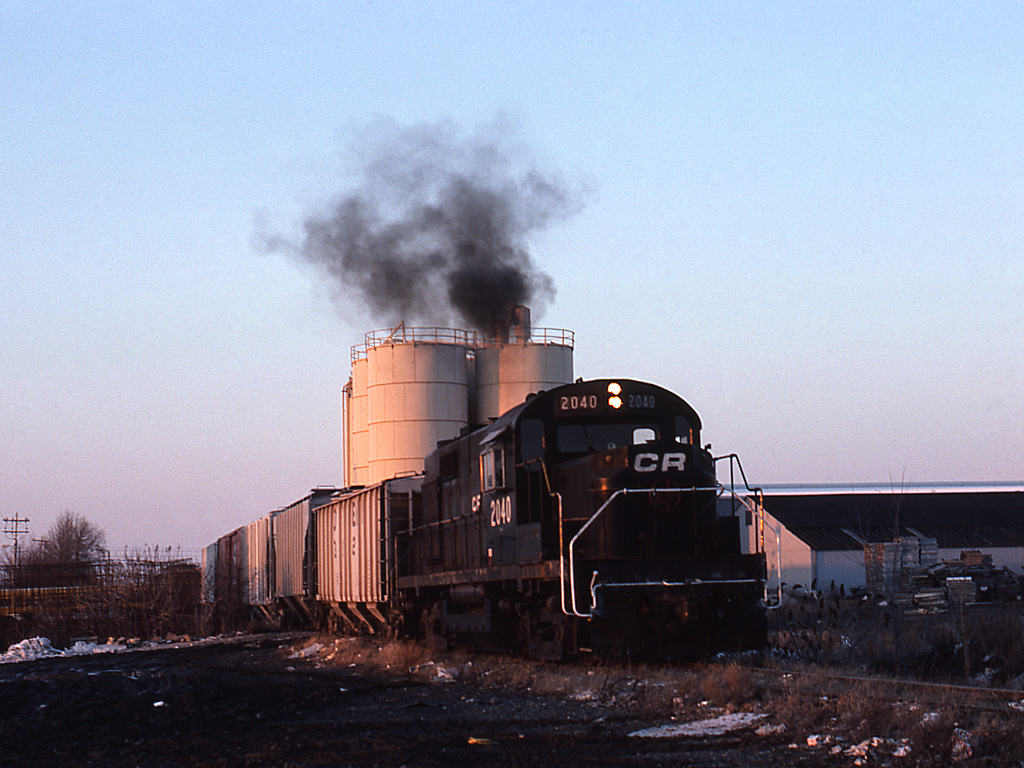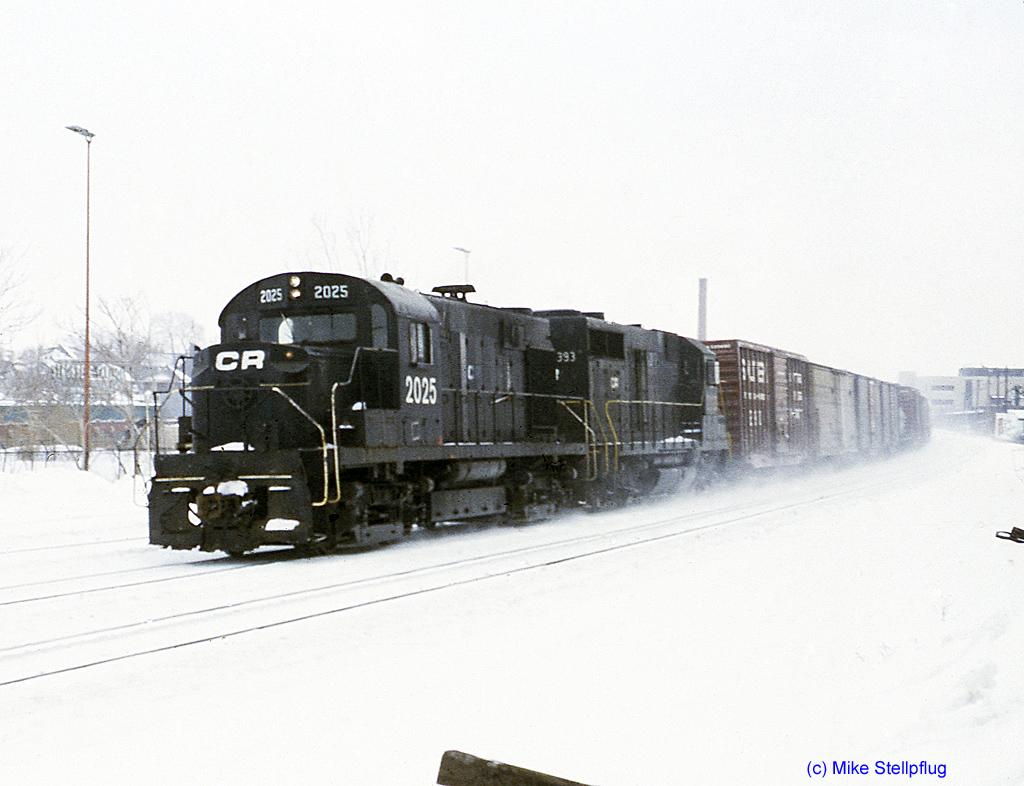
NickD
MegaDork
9/20/23 2:55 p.m.
There's also a fourth surviving RS-36, also in D&H paint and with a D&H number but not actually a D&H unit. That is Southern New England #5012, also on lease to Batten Kill Railroad and painted up in D&H lightning stripe livery. It actually came from the Atlantic & Danville, which then became the Norfolk, Franklin & Danville Railroad in 1962, but was eventually acquired by SNEX and done up as a D&H unit.


NickD
MegaDork
9/21/23 11:21 a.m.
The RS-36 wasn't a bad machine, since it was basically just a rerelease of the RS-11 and the 1800-2000hp Alco 251 V12 was one of their best engines that they offered, but it was an example of how Alco management wasn't really in tune with the market by the end of the RS-series and was just flailing about and shotgunning models out left and right. At the same time, between 1959 and 1963, Alco was offering the holdover 1000hp 4-axle RS-1 (on sale since 1940), the 2400hp 4-axle RS-27 (sold just 27 units), the 2400hp RSD-15 (sold just 75 units), the 2000hp 4-axle RS-32 (sold just 35 units), the 2000hp 6-axle RSD-33 (found exactly zero buyers), and the 1800hp RS-36 (sold just 40 units). The retreat into lower horsepower levels was also just an odd choice, when their competition was cranking up the heat, was also an odd choice, but maybe after the RS-27 failed to take root, they thought that railroads wanted less power. Also, at the same time, EMD was selling every 1200hp SW1200 they could make, and would roll out the 1500hp SW1500 shortly afterwards, Alco launched the 800hp S-5 and 900hp S-6, a downgrade not just from EMD's offerings but from the previous 1000hp S-2/S-4. It also didn't help that at the time, the 244 engine's failures had turned off a lot of buyers from Alco products, and Alco's poor customer support was burning bridges with many of the remaining railroads.


NickD
MegaDork
9/21/23 3:15 p.m.
The RS-32, which preceded the RS-36 and looked very similar, offered 200 more horespower, which put it on par with the EMD GP20 of the era, but it failed to find many buyers. Just two railroads stepped up to the plate: Southern Pacific bought ten and New York Central bought twenty-five of them. The RS-32 seemed to be a perfectly good unit, since it wasn't that far from the later and more successful C420, but there wasn't a ton of interest. NYC typically assigned theirs to road freights, and they handled that as well during the Penn Central era, but Conrail demoted them to yard switchers and local runs due to age and lack of dynamic brakes. Southern Pacific's also handled Coast Merchandise road freights, but were bounced down to yard jobs in short order, although they had sufficient acceleration to occasionally pinch hit on commuter runs when too many H-24-66s were laid up.


NickD
MegaDork
9/21/23 3:16 p.m.
An ex-NYC RS-32 on a local job on the the old Lehigh Valley Lima Branch.


NickD
MegaDork
9/21/23 3:37 p.m.
After Conrail sold off the exx-NYC/ex-PC RS-32s, Chicago & North Western grabbed up some of them to put to work up in Wisconsin. One of them is paired with an Alco RSD-5, the 6-axle version of an RS-3, and a GP9 that originally belonged to the Minneapolis & St. Louis before the C&NW gobbled up the Misery & Short Life in 1960.


NickD
MegaDork
9/21/23 4:39 p.m.
A freshly-shopped SP RS-32, #4005, with a grimy caboose at Millbrae, California in 1970. No clue why SP chose to paint the unit numbers above the numberboards as well.


NickD
MegaDork
9/21/23 4:40 p.m.
Southern Pacific's Sunnyvale Local with RS-32 #4004 and C-50-4 caboose #1899 switching the Libby's cannery in Sunnyvale on August 3, 1973


NickD
MegaDork
9/21/23 4:43 p.m.
A rearward angle of two SP RS-32s at Redwood City, showing another odd SP practice. For whatever reason, SP chose not to use the provide numberboards in the body notches, and instead just painted the number under the lights on the end of the body. So SP put four sets of numbers on the front, but only one on the rear.


NickD
MegaDork
9/22/23 9:39 a.m.
An ex-SP RS-32 working on the East Tennessee & Western North Carolina Railroad in Elizabethton, TN in 1982. By 1982, this 11-mile standard-gauge segment between Elizabethton and Johnson City was all that remained of what had once been the famed 60-mile standard- and narrow-gauge "Tweetsie". The entire narrow-gauge segment had been abandoned in 1950, and the standard-gauge segment had soldiered on, serving the American Rayon plant at Elizabethton with a pair of ex-Southern 2-8-0s. Southern traded two RS-3s for the pair of Consolidations in 1967, which returned to being Southern #630 and #722 for the excursion program, and eventually the ET&WNC traded the pair of RS-3s off for two RS-32s, as well as dropping the "Western North Carolina" part of the name in 1985, since the railroad hadn't gone to NC in 35 years at that point.


NickD
MegaDork
9/22/23 10:49 a.m.
ET&WNC #211 doing some street-running in Elizabethton, just one year before the name change to East Tennessee Railway. The #211 actually still exists, and kicked around a few different operations after the ETRY, before ending up on the Delaware-Lackawanna, first as their #211 and now as their #2002 (the first two digits are for 2000-horspower, the last two digits are from it's original number, SP #4002)


NickD
MegaDork
9/22/23 11:15 a.m.
A New York Central RS-32 with a B-B-A set of Alco FAs on a coal train at Wayneport, NY


NickD
MegaDork
9/22/23 11:18 a.m.
An RS-32 with a pair of U30Bs lead eastbound autoracks past the rundown freight house at Palmyra, NY.


NickD
MegaDork
9/22/23 12:31 p.m.
Reading & Northern has unveiled their other 40th anniversary unit to go along with GP38-2 #2023. While #2023 wears a new, unique livery that uses the modern R&N colors of green and yellow (ignoring the F-units, the Fast Freight SD50 triplets and the two red and yellow GP39RNs), the new heritage unit, SD40-2 #1983, wears the original blurple with yellow numberboards and pilot plow that was used on the CF7s when Reading & Northern started out as Blue Mountain & Reading. The paint scheme was originally described as being "the color of Blue Mountain in the distance." Gotta be honest, didn't like this livery on the CF7s, don't care for it on an SD40, but it's still a cool idea and a neat recognition of where the R&N came from.


NickD
MegaDork
9/22/23 12:35 p.m.
The two CF7s in the early days of the BM&R/RBM&N/R&N. Hopefully they used better grade paint this time, because those CF7s faded to a blotchy periwinkle in pretty short order.




NickD
MegaDork
9/25/23 12:38 p.m.
Since it is clear that Adirondack Railroad will not get the Thendara-Tupper Lake segment back operational this year (they had a washout at Carter Station and a bigger one north of Big Moose) and my schedule gets really busy the next couple weekends, I decided to chase a Utica-Thendara run and maybe ride the short Thendara-Otter Lake run.
Heading north over Olin Road in Marcy, with M420W #3573 and RS-18u #1835 in the lead.


That little single lane bridge in the fill dates back to 1904.


NickD
MegaDork
9/25/23 12:40 p.m.
Passing by the old New York Central depot in Holland Patent. I wanted to get a shot from the other side, but the crossing gates were coming down as I wheeled up, and I didn't have time.


NickD
MegaDork
9/25/23 12:41 p.m.
Running parallel to Sand Road in Remsen.




























































